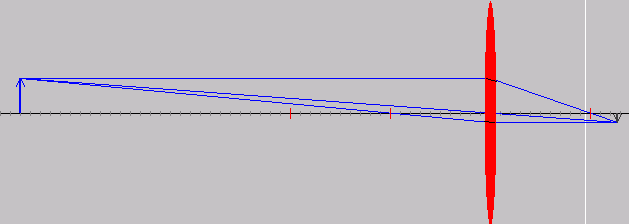
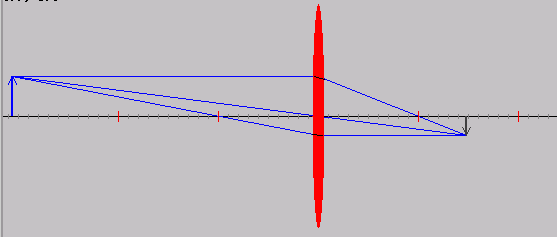
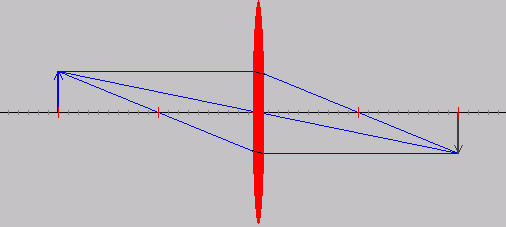
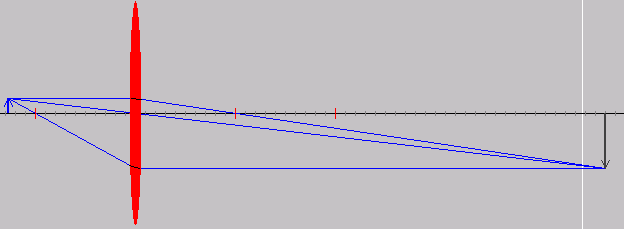
Looking back through the lens, it looks like there is a source of a different size, at a different position, which is then called the virtual image (shown in green in the picture below). It is different from a real image, in that it appears to be on the other side of the lens, and you cannot approach the image closely -- you bump into the lens first. The virtual image is right side up, and is larger than the object for this kind of lens. Thus this is an example of a lens used as a magnifier.
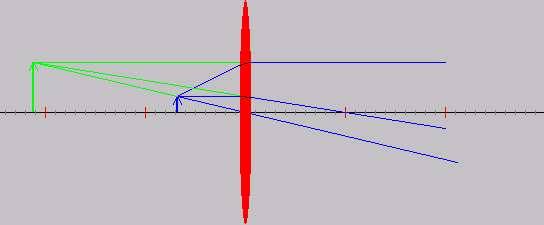
Diverging lenses (also called
Here is an animation that will do all the things described above. You can move the source (the arrow on the left) by clicking on it with your mouse. You can also move the lens, by clicking on it. You will see that you can have real images and virtual images that are big and small.[This applet was written by Fu-Kwun Hwang Copyright 1996 Fu-Kwun Hwang] Here is a similar animation, written by Michael Sheetz (University of Kentucky).
Our eyes are like cameras: they have a lens, and an image is formed on our retina. Sometimes the lens is too weak or too strong, with the result that some people can only focus on nearby objects (lens too strong) or distant objects (lens too weak). Wearing glasses can cure this: a positive (converging) lens will compensate for the eye lens that is too weak, while a negative (diverging) lens will compensate for the eye lens that is too strong. A different way to understand what glasses do is to observe that a negative lens turns a distant object into a nearby virtual image, which a nearsighted person can now focus on.
Curved mirrors combine the properties of a mirror and a lens, and also make images that can be real or virtual, big or small, far or near. The person you see in a flat mirror is an example of a virtual image -- you can bump noses with that person, but you cannot shake hands.
Box:
What have we learned about images?